The Box and Goodies -
The box for the P8Z77-V has the same look as all of Asus’ mid-level products. You get the black background with the dots (they remind me of the old TV show Lost in Space for some reason). In the series of dots you can just make out the infinity symbol (perhaps to indicate unlimited performance potential or something). As with the P8Z77-M Pro the big deal here is the Smart Digi+ which we will cover in more detail under features and in the performance half of our review. There are other badges and tags that are worth mentioning here though. As this is a step up from the M Pro you are going to get wireless (but not Bluetooth), an actual Intel network controller (to go with the Network iControl) and improved audio software. 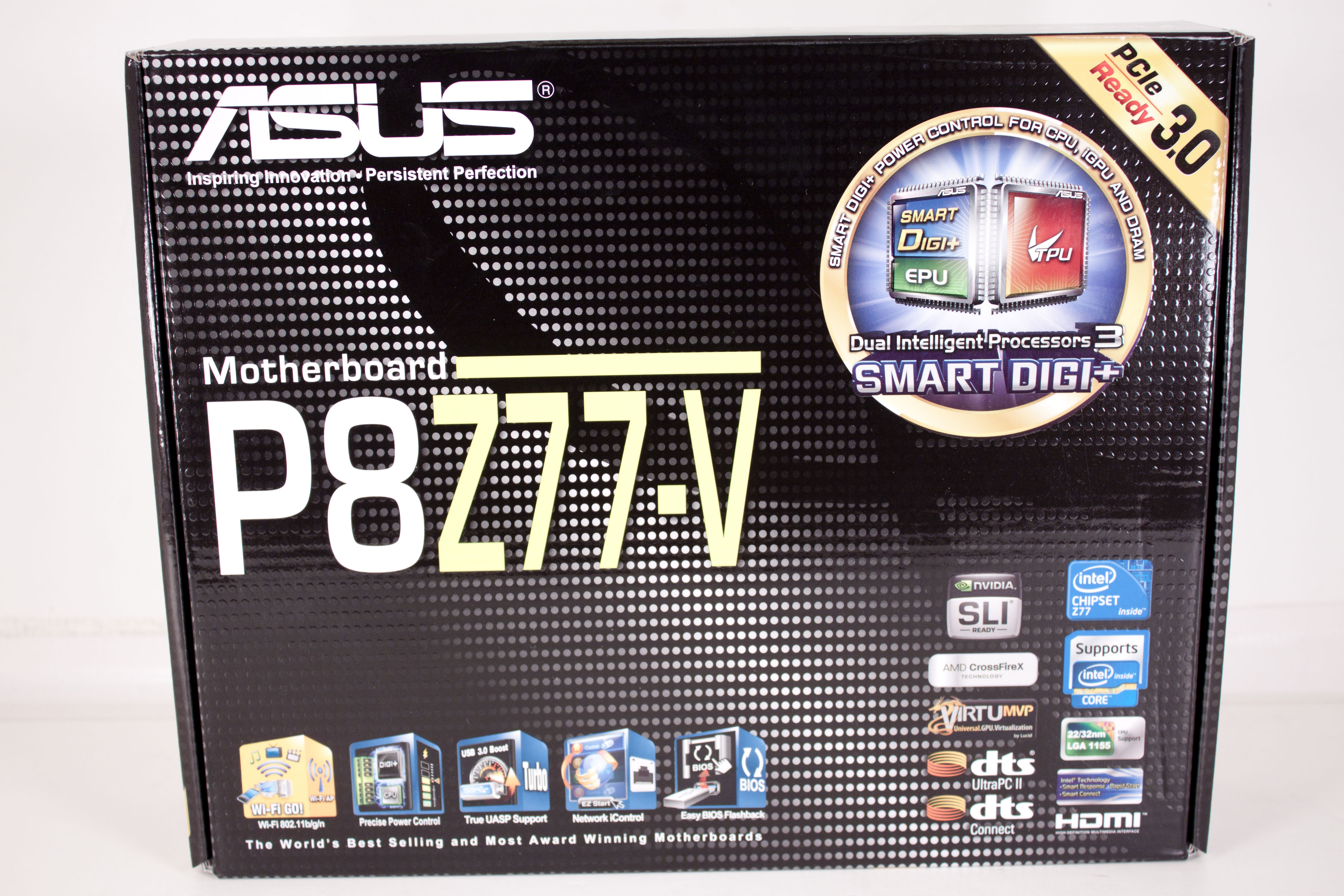
Flipping things around you have a more detailed look at the P8Z77-V and the primary features that are offered. Again topping the list we find the Smart Digi+ controls. This really is a great feature and one that Asus was smart to bring to their mid-level products.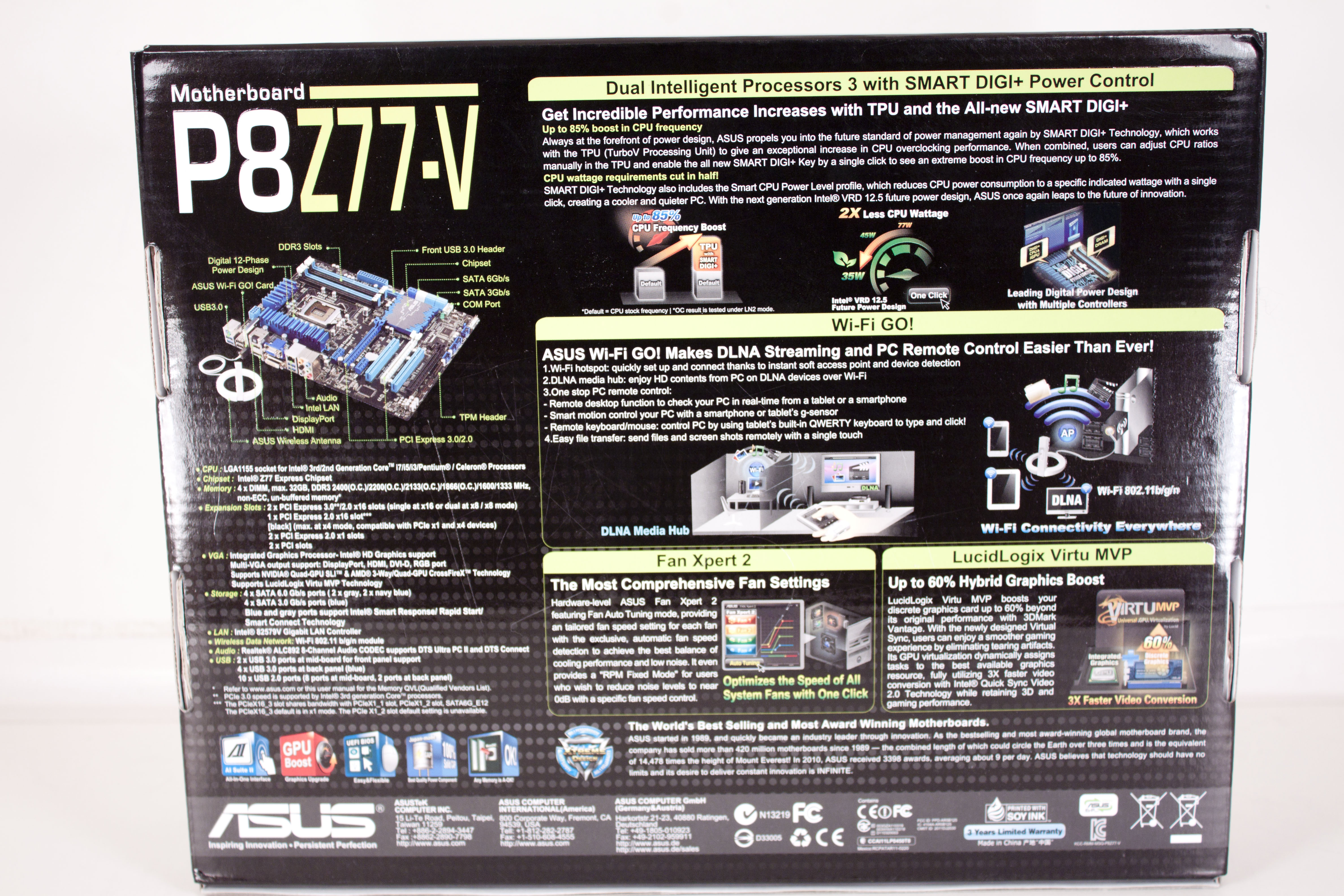
Inside the box we find a little a couple of new items like the WiFi GO! module and antenna. The rest is pretty much standard for Asus’ midrange boards.
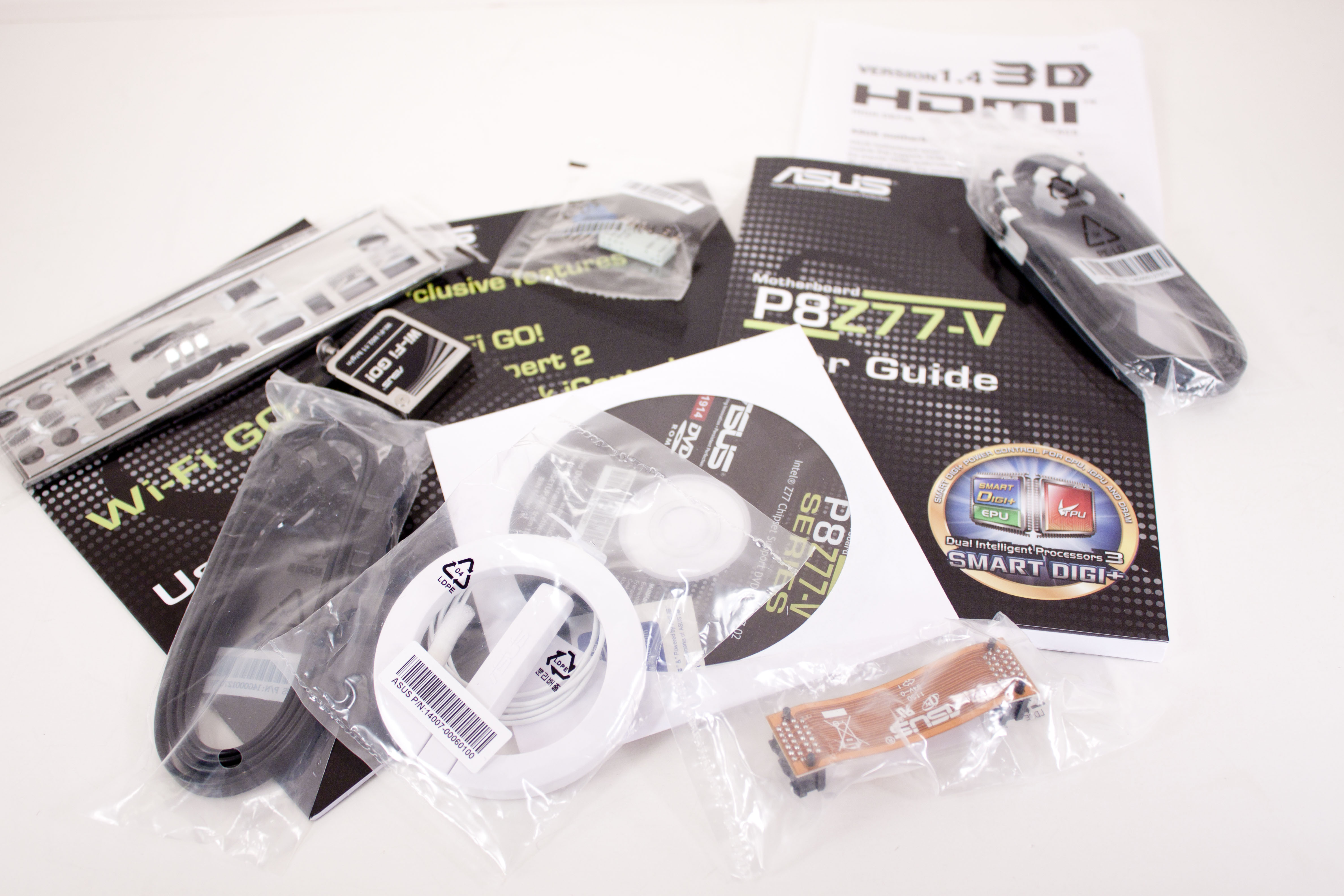 |
 |
The Layout -
The layout of any motherboard is important. Even simple mistakes in component placement or the signal traces can cause major issued in performance and stability. With the ATX form factor we find that this is even truer; the devices we drop onto them demand more and cleaner power while the signal speeds push faster and faster. The P8Z77-V is a full sized ATX board which gives Asus a little more room to drop in features, but also to make doubly sure that their traces are laid out right. We have talked about this before and cannot stress it enough. If you lay your traces out properly you can overcome many performance and stability issues without the need to continuously reprogram your BIOS to compensate. Asus has also moved to a new style of trace layout in anticipation of improvements in DDR speeds. This is not only going to benefit you today, but in the future as things speed up.
Kicking of our typical walk around we see that the P8Z77-V has a very typical layout for an ATX board. You have the four RAM slots in the upper right-hand corner along with the 24-pin ATX power connector and a USB 3.0 header squeezed in. You also get a MemOK! Button here which can shift between profiles or just find the best timings to get your memory working. Asus has also move to all solid capacitors on their boards (almost the entire line up). These are going to give you better product life along with a performance benefit.
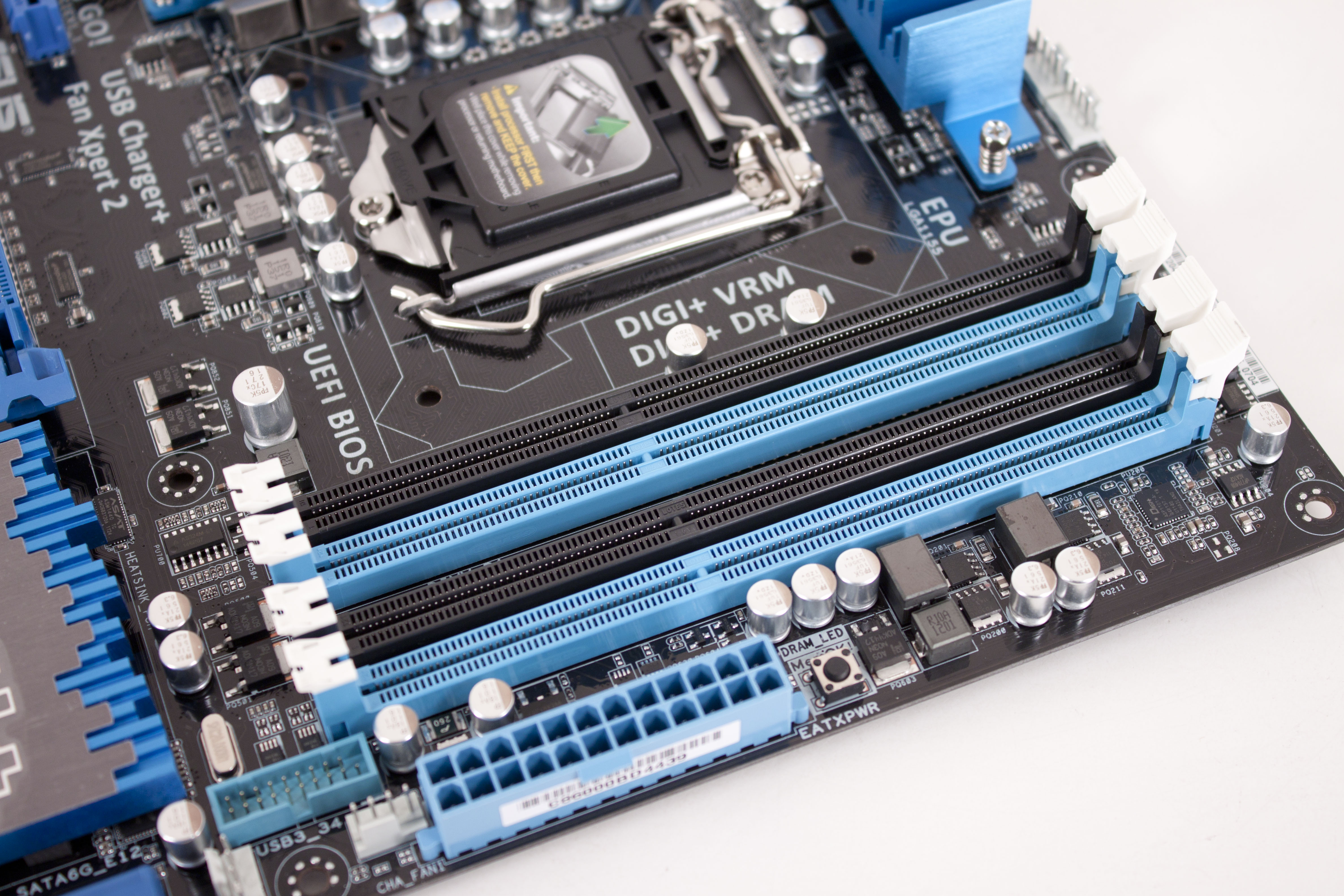 |
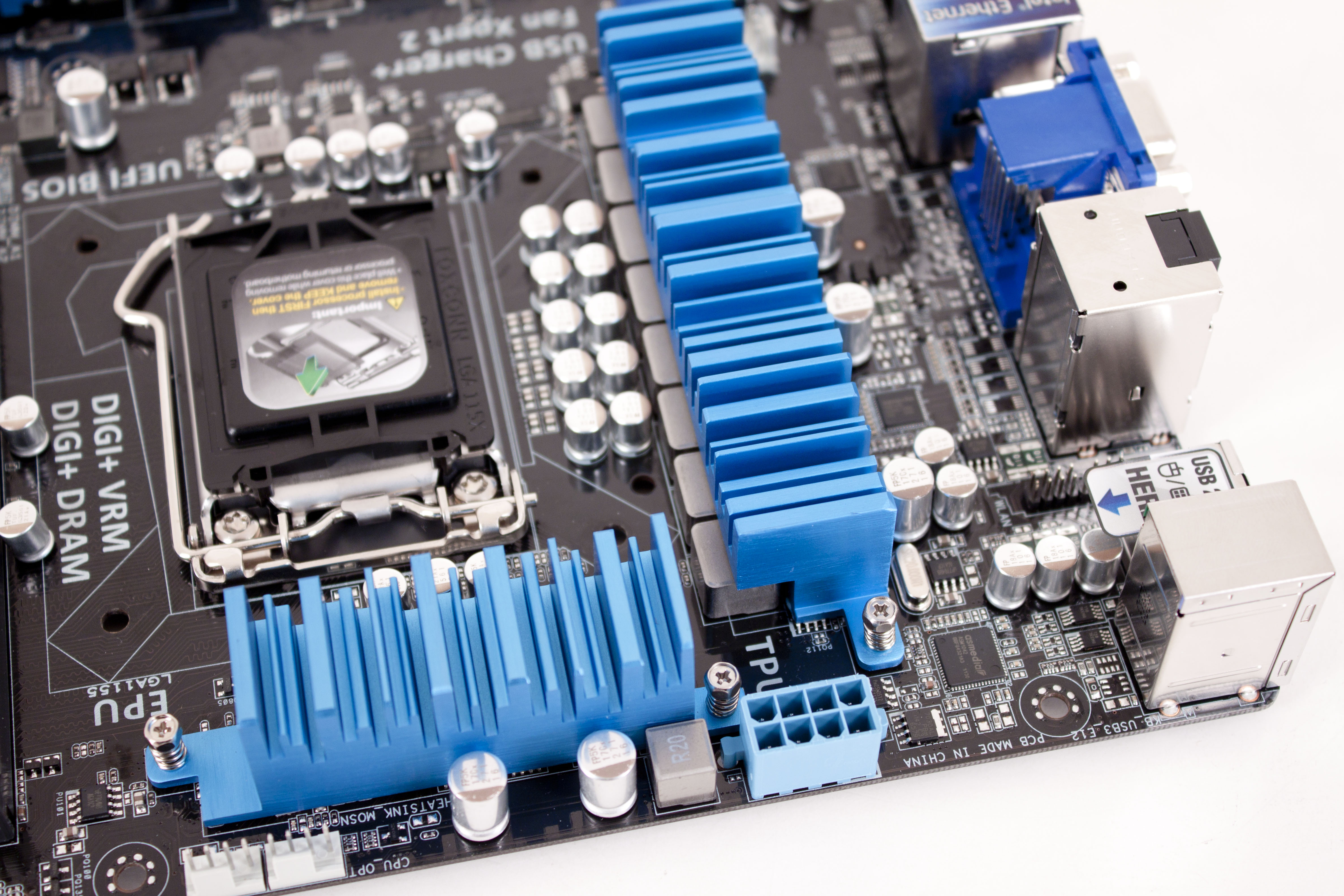 |
Looking at the top of the board we find a nice feature that we even saw on the smaller M Pro. Asus has thrown in two CPU fans and labeled them as such. This is great for either the self-contained water cooling rigs or for air coolers that support two fans. You do not have to route fan cables all over your board and can keep things cleaner. The 8-Pin aux power connector has also been given a little more room, but we still recommend using an extension cable just to make things that much easier.
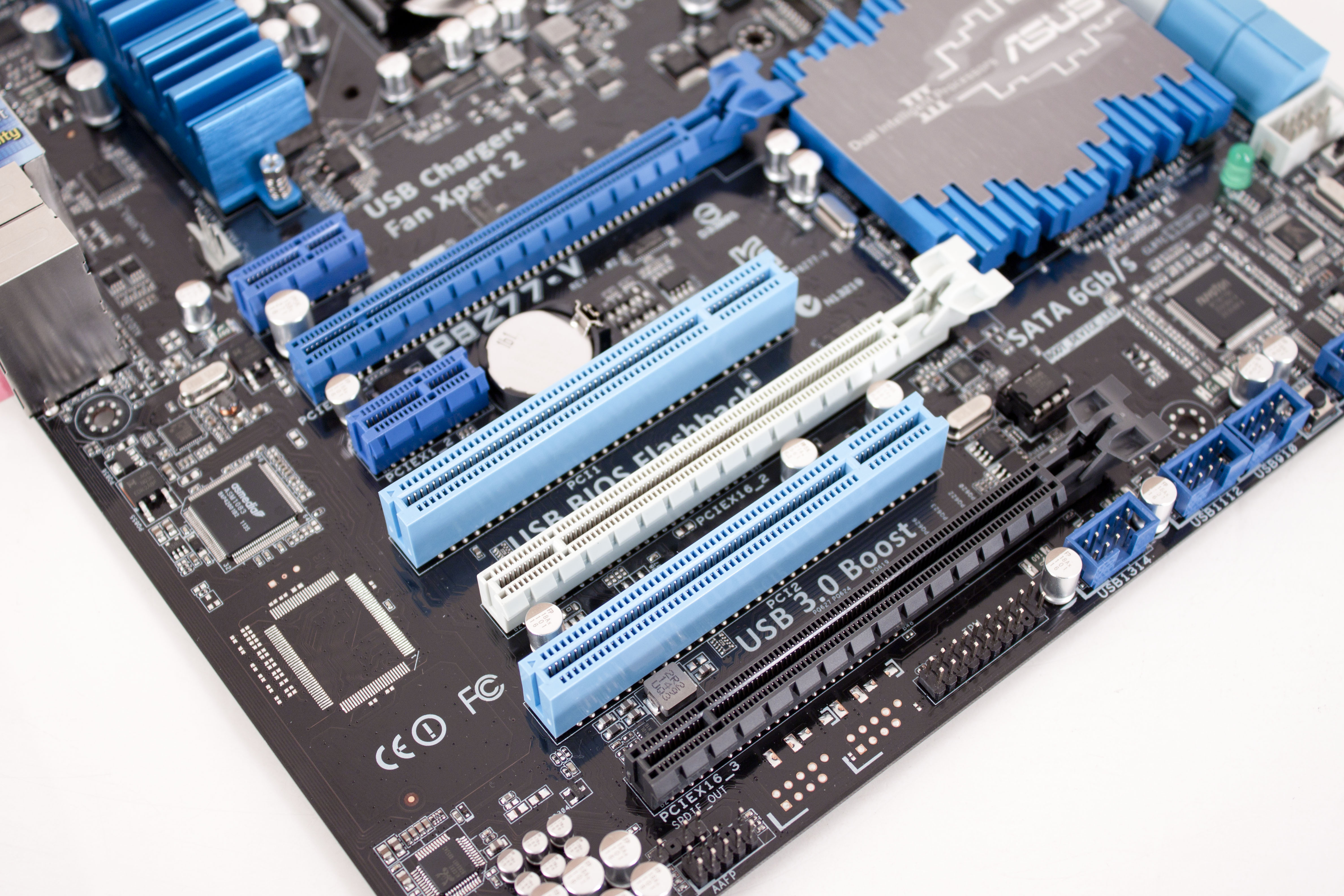 |
 |
Dropping down to the peripheral slots we find that Asus has given you three x16 mechanical slots. Only two of these is going to support PCIe 3.0 (x16 slots one and three) and only one will ever be fully x16 electrical. The others are only pinned out for x8 maximum if you are running Gen 3 SLI you will want to use slots one and three and then will get x8 out of both. For those interested in legacy devices there are two PCI 2.1 ports you can use. Taking our last turn around the P8Z77-V we find the Z77 chipset under a large and blocky heatsink. We do hope that this will be able to keep things cool as we have found that the Z77 does run a little hot. The P8Z77-V also increases the number of available SATA ports you have with a total of 8 ready for you. Four are SATA 2.0 from the PCH while the other four are SATA 3.0 (The two white are from the PCH and the two dark blue are from an ASM1061 SATA 3.0 controller). 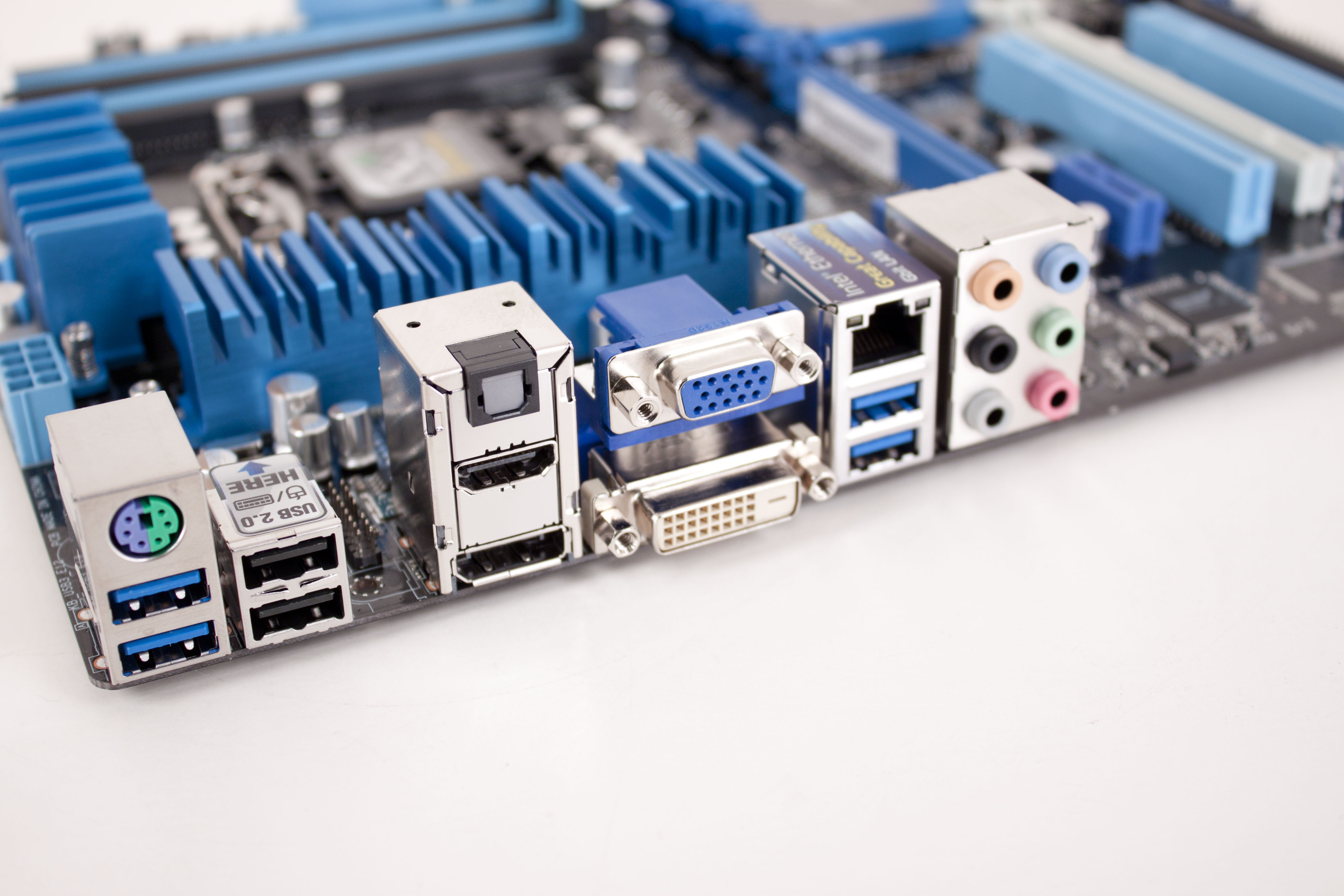
Looking at the I/O ports we notice something a little odd, there are only two USB 2.0 ports on the back. Normally motherboards in this range are loaded up with USB ports, but that is not the case here. These two ports are also labeled for use with your keyboard and mouse. If you are still using PS/2 you do have a single dual purpose here. As with other Asus Z77 motherboards you have both ASMeida and Intel USB 3.0 ports available to use (and both work with USB 3.0 Boost). For video out you have a nice selection of options and of course that Intel networking controller rounds everything out.
Features -
In the current market motherboard (and indeed almost all component) performance is very close. The days of a large performance advantage between boards using the same chipset are long gone. That is unless someone makes a HUGE mistake (like runs traces completely wrong). Now, the thing that differentiates different products is the features. These are things like power management, extra slots, better audio CODECs etc. It is these items that R&D teams work so hard to drop into what are really identical pieces of hardware at their most basic level.
Excellent -
Intel Lan
FanXpert 2
Smart Digi+
USB 3.0 Boost
USB BIOS Flashback
WiFi GO! Media Streaming
VirtuMVP
PCIe 3.0
Network iControl
You might have noticed that this list is a little long. The reason behind this is that these features are excellent in this level of motherboard. At the range we are talking about to have the same level of features that you would expect from Asus’ ROG products is simply great. The Intel LAN, the Network iControl and media streaming over WiFi all are outstanding features for a mid-range product like the P8Z77-V. Asus’ implementation of the Smart Digi+ controls is another item that we cannot stress enough. To not only bring these controls to the mid-range market, but to package them in a way that allows even new users to take advantage of this shows a high level of commitment to the consumer. 
In the middle (sort of good) -
DTS UltraPC II
DTS Connect
HDMI 1.4
As you can see here even the mid-level features are solid. The addition of the DTS UltraPC II and DTS connect increase the P8Z77-V’s potential as a multi-media and gaming system while HDMI 1.4 support on the board (with Intel’s next gen CPU) only adds to the value
Floor Mats -
Q-Connect
SLI
Crossfire
These features are still good, but they are features that you would expect from a board at this level.
Conclusion –
We have said it before, Asus is a company that appears to set the market trends and in many ways the direction that other manufacturers will take. We have already seen many of their stock features show up in other manufacturer’s products and we expect the same will continue to happen. With the Z77 line up we are seeing more of the direction that Asus talked about with us back in 2010 when they said they would continue to introduce features on their top-end products (the Republic of Gamers line) and then allow those to trickle down to the rest of their products. The P8Z77-V is an excellent example of this with features like Smart Digi+ controls, FanXpert2 and many other items that were once only found in the realm of the ROG line. We are looking forward to getting this on the test bench and trying out some of these new features and also seeing if the P8Z77-V has the performance to match the feature set.
Discuss this in our Forum